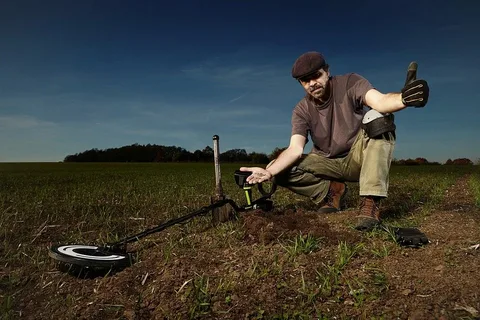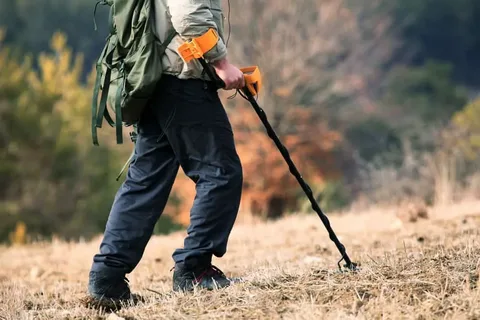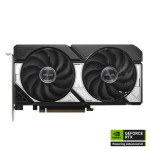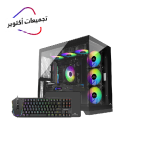Best practices for handling large drilling machinery are essential for ensuring the safety of workers and the proper functioning of equipment on construction معدات تنقيب 24 (6/11) sites and industrial facilities. Implementing these best practices involves following guidelines and procedures that minimize the risk of accidents and damage while maximizing efficiency and productivity. In this article, we will discuss the importance of implementing best practices for handling large drilling machinery and provide practical tips for doing so.
Implementing best practices for handling large drilling machinery involves focusing on proper training, maintenance, and safety protocols. It is important to ensure that all operators are well-trained and certified to operate the machinery. Regular maintenance and inspections should also be conducted to ensure that the machinery is in good working condition. Additionally, establishing and enforcing strict safety protocols and procedures can help minimize the risk of accidents and injuries. It is also crucial to provide ongoing training and updates on best practices to ensure that all operators are up to date with the latest safety guidelines.
10 Important Tips for Safely Operating Large Drilling Equipment

1. Ensure proper training: All operators of large drilling equipment should be well-trained and knowledgeable about safe operating procedures.
2. Conduct regular inspections: Thoroughly inspect all equipment before and after each use to ensure everything is in proper working condition.
3. Follow safety guidelines: Adhere to all safety protocols and guidelines set forth by the equipment manufacturer and industry standards.
4. Use personal protective equipment: Wear appropriate PPE, such as gloves, safety glasses, and hard hats, to protect yourself from potential hazards.
5. Communicate effectively: Maintain clear communication with all team members involved in the operation to avoid accidents and injuries.
6. Monitor weather conditions: Be aware of changing weather conditions that could affect the safe operation of large drilling equipment.
7. Operate at a safe distance: Keep all non-essential personnel at a safe distance from the operating area to prevent accidents.
8. Secure the work area: Ensure the work area is free from obstructions and hazards before starting the operation.
9. Use equipment safeguards: Make use of safety features and guards on the equipment to prevent accidents and malfunctions.
10. Stay alert and focused: Always be alert and focused while operating large drilling equipment to effectively respond to any unexpected situations.
The Dos and Don’ts of Handling Heavy Drilling Machinery
Impact of Technology: Modern Mining Equipment Advancements

The dos and don’ts of handling heavy drilling machinery include ensuring proper training and certification for operators, conducting regular maintenance and inspections of the equipment, using appropriate personal protective equipment, following proper operating procedures, and communicating effectively with coworkers. It is important to avoid operating heavy drilling machinery without the necessary training and certification, neglecting maintenance and inspections, failing to use the proper personal protective equipment, disregarding operating procedures, and failing to communicate effectively with coworkers. These dos and don’ts are essential for promoting safety and efficiency when working with heavy drilling machinery.
ٍSee Also: Role of Geophysical Survey Equipment in Exploration
Efficient Techniques for Maneuvering Large Drill Rigs on Site

The efficient techniques for maneuvering large drill rigs on site include thorough planning and coordination with the site team to ensure that the rig can access the desired drilling locations without obstacles. This may involve clearing pathways or modifying the terrain to accommodate the rig’s movement. Additionally, using specialized equipment such as remote-controlled vehicles or rig positioning systems can aid in precise maneuvering and placement of the drill rig. Proper training and supervision of the rig operators are also crucial for safe and efficient maneuvering on site. Overall, effective communication and strategic planning are essential for successful maneuvering of large drill rigs on site.
Safety Guidelines for Working with Oversized Drilling Equipment

ٍSee Also: How to Check the Authenticity of Gold Jewelry
Safety guidelines for working with oversized drilling equipment include ensuring that all personnel are properly trained on the equipment and its operation, wearing appropriate personal protective equipment, and following all manufacturer’s recommendations and guidelines for safe operation. It is also important to ensure that the equipment is inspected regularly for any signs of wear or malfunction, and to follow proper procedures for maintenance and repair. Additionally, creating a clear and organized work area, and communicating effectively with all team members involved in the operation of the equipment can help to prevent accidents and ensure a safe working environment.
Maximizing Productivity while Operating Big Borehole Drills
To maximize productivity while operating big borehole drills, it is essential to ensure regular maintenance and servicing of the equipment. This includes checking for any wear and tear on drill bits, replacing them as needed, and ensuring that the drilling machinery is in optimal working condition. Additionally, thorough planning and scheduling of drilling operations can help to minimize downtime and maximize the efficiency of the drilling process. It is also important to train and educate the drilling team on best practices for operating the equipment to ensure safe and effective drilling operations. By implementing these strategies, productivity can be maximized while operating big borehole drills.
Common Mistakes to Avoid When Using Large Drilling Machinery
– Failure to properly inspect and maintain the drilling machinery can lead to breakdowns and accidents. Regular maintenance checks and servicing are essential to ensure the safe and efficient operation of large drilling machinery.
– Ignoring the proper training and certification for operators can result in dangerous and costly mistakes. It is crucial to ensure that all operators are adequately trained and certified to operate the specific drilling machinery.
– Overestimating the capacity and capability of the drilling machinery can lead to overloading and potential damage. It is essential to understand and adhere to the recommended operating parameters and limits of the machinery.
– Neglecting to secure the work area and surrounding environment can pose serious safety hazards. It is important to clear the work site of any obstacles or hazards and implement proper safety measures to prevent accidents or injuries.
– Failing to follow proper drilling techniques and procedures can result in subpar results and unnecessary wear and tear on the machinery. It is crucial to adhere to the recommended drilling techniques and procedures as outlined in the machinery’s manual.
Overall, avoiding these common mistakes when using large drilling machinery can help ensure the safety, efficiency, and longevity of the equipment.
Best Practices for Maintaining and Inspecting Heavy Drill Equipment
Regular maintenance and inspection of heavy drill equipment is crucial to ensuring its safe and efficient operation. Some best practices for maintaining and inspecting heavy drill equipment include:
1. Establishing a regular maintenance schedule to ensure that all components, such as hydraulic systems and electrical wiring, are in proper working condition.
2. Conducting thorough pre-shift inspections to identify any potential issues or hazards before using the equipment.
3. Keeping detailed records of all maintenance and inspection activities, including any repairs or replacements made to the equipment.
4. Training operators and maintenance personnel on proper equipment maintenance and inspection procedures.
5. Utilizing specialized tools and equipment, such as torque wrenches and pressure gauges, to accurately assess the condition of heavy drill equipment.
6. Following manufacturer recommendations and guidelines for equipment maintenance and inspection.
7. Implementing a system for reporting and addressing any identified issues or malfunctions promptly.
8. Regularly checking and maintaining the drill bits, pipes, and other accessories used in the drilling process to ensure they are in good condition.
9. Keeping the equipment clean and free of debris to prevent damage and corrosion.
10. Conducting regular safety checks to ensure that all safety features, such as emergency shut-off switches and guards, are in proper working order.
Essential Training for Operators of Large Drilling Machines
ٍSee Also: What is the Purity of Gold Jewelry Sold Online?
Essential Training for Operators of Large Drilling Machines covers the necessary skills and knowledge to safely and efficiently operate drilling equipment. The training typically includes instruction on machine operation, maintenance, and troubleshooting, as well as safety procedures and best practices. It may also cover topics such as proper use of drilling tools, understanding drilling patterns, and the importance of following industry regulations and standards. This training is essential for ensuring the successful and safe operation of large drilling machines in various industrial and construction settings.
The Importance of Properly Securing and Transporting Drill Rig Components
The proper securing and transportation of drill rig components is essential to ensure the safety of both the equipment and the individuals involved in the process. Improperly secured components can result in damage to the equipment, as well as pose a serious risk of injury or accidents during transportation. Proper securing involves using adequate strapping and tie-downs, as well as ensuring that the components are balanced and evenly distributed to prevent shifting or tipping during transit. It is also important to be aware of any regulations or guidelines for transporting oversize or heavy loads, and to comply with these standards to avoid fines or penalties. Overall, the importance of properly securing and transporting drill rig components cannot be overstated in ensuring the safety and integrity of the equipment and everyone involved in the process.
Safety Protocols for Working with Hydraulic and Pneumatic Drill Systems
1. Always wear appropriate personal protective equipment (PPE) such as safety goggles, gloves, and hearing protection when operating hydraulic and pneumatic drill systems.
2. Before use, inspect the drill system for any signs of damage or wear, and ensure that all guards and safety features are in place and functioning properly.
3. Only use the drill system for its intended purpose and operate it in accordance with the manufacturer’s instructions and guidelines.
4. Be mindful of the drill system’s pressure and torque limits, and never exceed these limits to prevent equipment failure and potential injury.
5. When changing drill bits or performing maintenance on the drill system, ensure that it is completely depressurized and powered off before proceeding.
6. Keep the work area clean and free of debris to prevent tripping hazards and ensure a safe operating environment.
7. Always use proper lifting techniques and equipment when handling heavy drill components to prevent strain or injury.
8. In the event of a hydraulic or pneumatic fluid leak, immediately shut off the system and address the issue to prevent potential fire hazards and environmental contamination.
9. Regularly inspect and maintain the hydraulic and pneumatic components of the drill system to ensure their continued safe and efficient operation.
10. Provide thorough training and supervision for all workers who will be operating hydraulic and pneumatic drill systems to ensure they are knowledgeable about the safety protocols and procedures.









